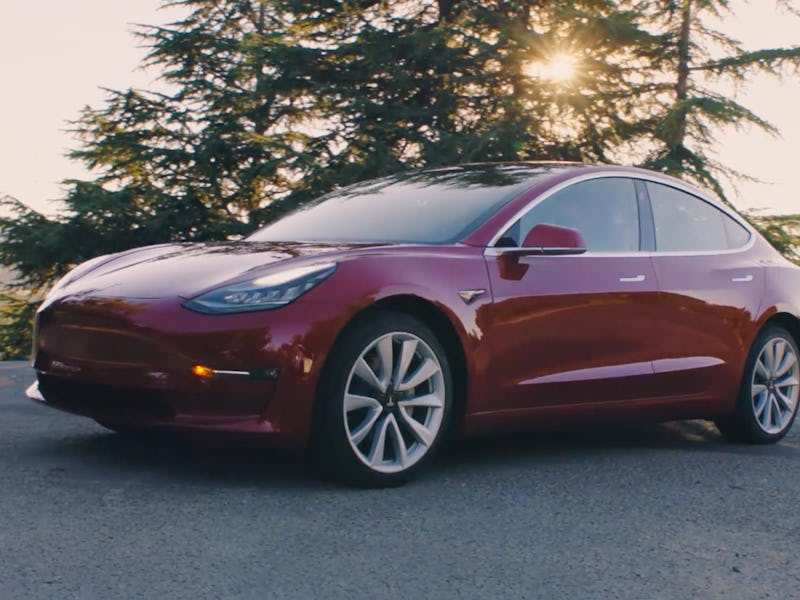Much like Tesla’s factory output, Elon Musk’s predictions keep getting bigger and bigger. On Monday, the CEO claimed that annual demand for the company’s new Model 3 will reach 700,000, with the potential to go even higher. The $35,000 vehicle is by far the cheapest the company has ever produced, but before this week Musk had only predicted annual demand would reach the 500,000 mark.
Electrek, citing two sources, reported that Musk made the comments at a Goldman Sachs-hosted meeting. Earlier in the day, Tesla announced plans to issue $1.5 billion in “junk bonds” — the first time the company has issued high-risk debt securities — as a way of fueling factory expansion to meet demand.
If Musk’s prediction comes true and Tesla can keep up with demand, it would likely make the Model 3 the best-selling electric car of all time by a wide margin. The Nissan Leaf, the current record holder, has sold over 250,000 vehicles, but that was over a six-year period between 2010 and 2016.
Tesla's Model 3.
At the July handover event, where the first 30 reservations holders received their vehicles, Musk revealed that the current number of reservation holders rests around the 500,000 mark. Tesla’s quarterly production rate is rapidly increasing, but it still makes fewer than 10,000 cars per year. Tesla plans to expand production to 10,000 cars per week at some point in 2018.
The newly-announced “junk bonds” are key to this. When Tesla sells a bond to an investor, it agrees to pay back the value plus interest over time, but the investor runs a particularly high risk with junk bonds that the company could miss its payments. Its “junk” status is decided by a debt ratings agency. Standard & Poor gave the $1.5 billion bonds this status as Tesla runs the risk of failing to meet its rapid Model 3 expansion.
“We could lower our ratings on Tesla if execution issues related to the Model 3 launch later this year or the ongoing expansion of its Models S and X production lead to significant cost overruns,” Standard & Poor said in a statement.
Tesla is continuing constriction at the Gigafactory in the Nevada desert, and three more Gigafactories may help boost production rates, but one thing’s for sure: Musk has set the company an aggressive expansion rate. By the next quarterly report, it may become clear whether it’s realistic.
